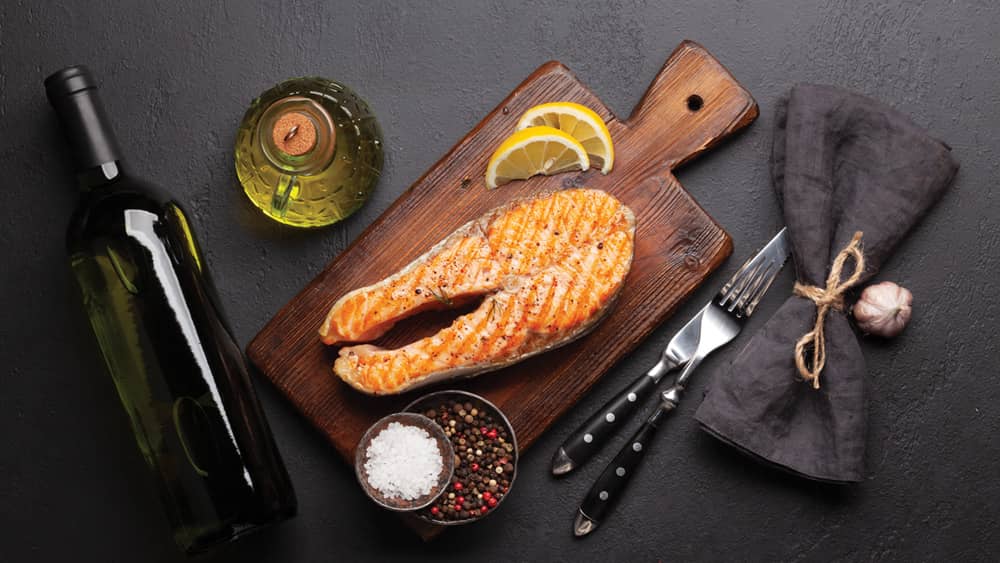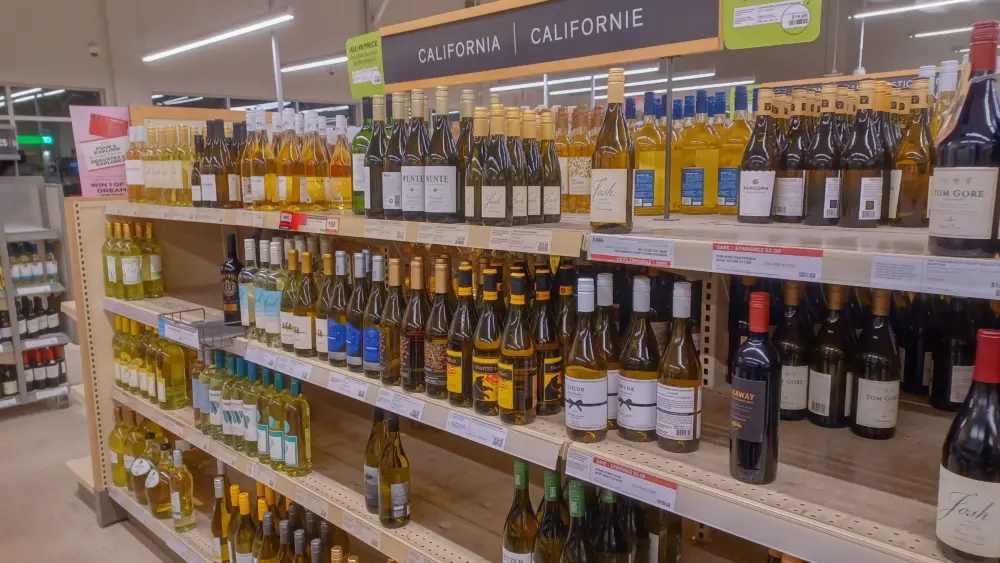
Still believe that you only drink white wine with seafood? Guess what—reds also work. In fact, all the old rules about matching the color of wine with food can be thrown out the window. The variety of the grape and the how the wine is made (its style) are of much more important consideration than color. Red such as Grenache or Pinot Noir can be soft, delicate and very subtle. Sauvignon Blanc (a white varietal) can be made in a style that is powerful, heavy and herbaceous and completely overpower a delicate fish dish. The key then to match wines with food is to understand a little more about the flavors of wine. Here are a few guidelines that we use in deciding what wine to serve.
Briny, salty dishes. With briny, salty dishes serve wines that are off-dry, low in alcohol and without tannins. If you haven’t read much about wine I should stop here for a brief explanation of the terms “off-dry” and “tannins”. Off-dry means that the wine has a little bit of residual sugar left in it. If it were completely dry all the sugar in the fruit would have been converted to alcohol. Typically, off-dry wines are a bit lower in alcohol (10 to 11% by volume) compared to dry wines, which can run 12% to 13%. Varietals that fit in the off-dry category include Riesling, Gewurztraminer, Chenin Blanc, and White Zinfandel.
Tannins are those flavors that occur predominantly in young red wines that cause the mouth and tongue to pucker a bit—like when you drink tea that has been brewed too strongly. A bit of tannin can add interest to wine and food, but too much can be a real turnoff. If you think about adding salt to an already “puckering” tongue you no doubt get the idea that this would not be a particularly good match. Salty foods then are softened by off-dry wines. A completely dry, tannic, or oaky wine such as a typical California Chardonnay or Cabernet creates too much of a contrast in the mouth and sets up a battle of flavors in which neither side wins. I love salt cod dishes and can’t think of a better wine to serve than a good Riesling or Gewurztraminer.
High-acid dishes. With high-acid dishes, serve a high acid wine. An example here would be a ceviche—also known as seviche— in which a lot of fresh lemon or lime juice is used to “cook” the fish. A young Sauvignon Blanc with good matching acidity and crispness works well here. Off-dry wines would taste too sweet and strange with such an acid dish.
Fatty/rich dishes. With fatty/rich dishes serve a rich white wine or lighter red wine. A dish of broiled or grilled salmon with an herb-butter sauce pairs wonderfully with a rich, oaky, “fat” California Chardonnay. The safest approach in any food-and-wine pairing is to combine flavors that complement each other as in this match. Occasionally, however, contrasting flavors can also work, and my preference would be to serve the salmon with a Pinot Noir, a varietal red usually made with delicacy and not overloaded with tannins. The little bit of tannin helps cut through the fattiness of the fish and sauce.
Smoked fishes. Serve smoked fishes with off-dry, lower alcohol wines. As with salt (and often smoked fishes are cured with salt) a Gewurztraminer, Riesling, Chenin Blanc, or a well-made White Zinfandel softens and rounds the smoke flavors. Crisp, acidic wines seem to clash. For this reason, we don’t serve sparkling wine or Champagne with smoked salmon even though this is often touted as a classic combination.
Fried Foods. Serve deep-fried foods with very crisp, high acid, dry white wines or (surprise!) a good California sparkling wine. Assuming that the deep frying is done well, (i.e., not leaden, and oily), the crisp wine seems to enhance the crisp burst of flavor one experiences with good, deep-fried food. Seafood can be great with a crisp, clean, non-oaked California Chardonnay or French Chablis. If you were feeling festive, my favorite would be to go with a sparkler.
Spicy foods. Serve spicy foods with low alcohol, off-dry white or low tannin, fruity red wines. Another surprise—wines can work with your favorite Thai- or Latin-flavored fish dishes. Be sure they’re low alcohol, (higher alcohol tends to accentuate heat) and fresh and fruity. A bit of residual sugar seems to calm the heat a bit and refresh the palate. For whites, try a California Gewürztraminer or Riesling. On the red side, young California Gamay or French Nouveau Beaujolais can work well here (again helping to debunk the white wine with fish rule!).
Wine is one of the oldest and most basic foods, and it’s meant to be enjoyed in context with food. Hopefully, these guidelines will encourage you to try and decide what you like. In the final analysis, that’s what is important. Drink what you like. It’s part of the joy of cooking and eating!
John Ash is a legendary chef, author and culinary educator, and in the North Bay he’s often referred to as “The Father of Wine Country Cuisine.” On Saturdays from 11 a.m. to noon, John demystifies the cooking process on The Good Food Hour with co-host Steve Garner on KSRO (1350 AM, 103.5 FM and 94.5 FM). For more information, visit chefjohnash.com.



